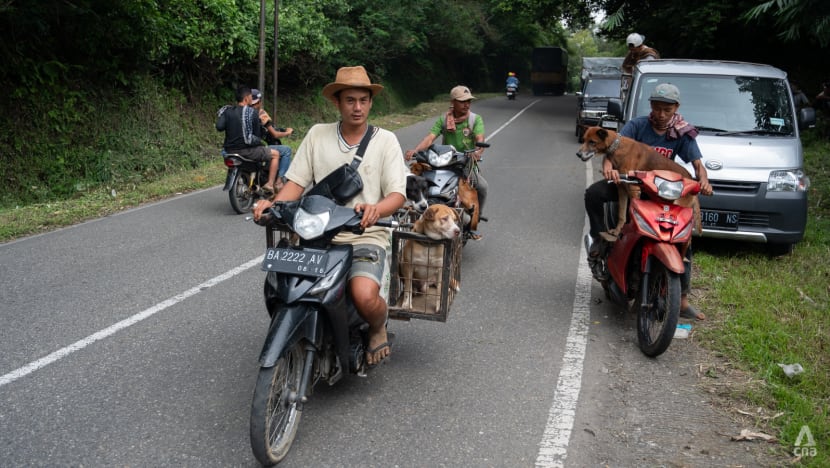Dogs, boars engage in a brutal standoff in a controversial West Sumatra tradition
For generations, people in Indonesia’s West Sumatra province have been hunting wild boars which often encroach on their farmlands, relying not on guns or other weapons but their dogs’ killer instincts which were nurtured from a young age.
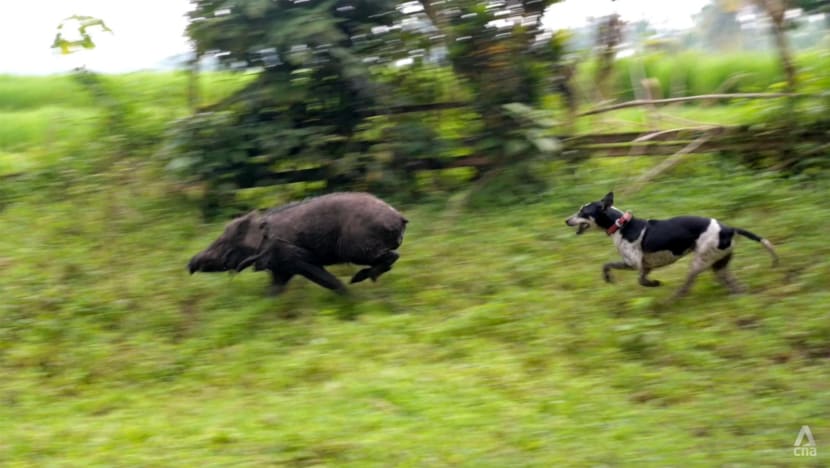
A wild boar being chased by a dog at a training camp for hunting canines in Tanah Datar, West Sumatra, Indonesia. (Photo: CNA/Wisnu Agung Prasetyo)

This audio is generated by an AI tool.
SIKALADI, Indonesia: The residents of the otherwise quiet town of Sikaladi woke up one February morning to the buzzing chatter of more than a hundred men and the constant barking of their four-legged friends.
A wild boar was spotted a few days earlier, munching on some peanuts at a farm at the top of a thirty-metre hill overlooking the small agrarian town of 1,500 people, located on a meandering country road in the mountainous interior of Indonesia’s West Sumatra province.
Members of the Indonesian Boar Hunting Association (PORBI) caught wind of the sighting and immediately told its members to gather at the foot of the hill with the sole purpose of hunting down the swine.
That day, the hunters had been flocking to Sikaladi since 8am. One by one, they came with their motorcycles which were fitted with metal cages on both sides to transport their four-legged companions. The more affluent hunters arrived in their pickup trucks, capable of hauling between four to eight dogs at a time.
“It’s thrilling to see our dogs chase down a boar, the commotion, the barks, the cheer of friends,” Mr Sumantri, a construction worker who said he has been hunting boars since he was a boy, told CNA. Like many Indonesians, the 51-year-old goes by one name.
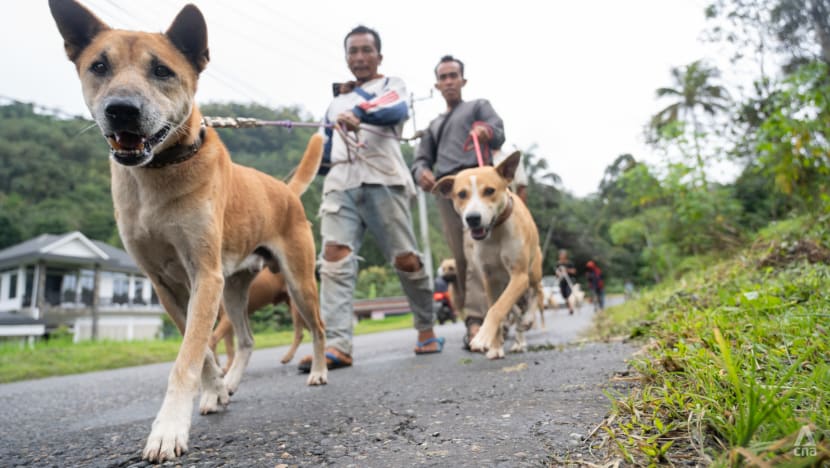
For generations, people in West Sumatra have been hunting wild boars which often encroach on their farmlands and destroy their crops.
Today, however, the practice has become less about the villagers’ need to rid of the pests and more of a sport and a pastime, attracting enthusiasts from other cities and villages dozens of kilometres away.
Several regencies in West Sumatra even tried to promote these boar hunts as a tourist attraction, staging events which draw in thousands of hunters and spectators from far-flung corners of Indonesia.
And with the activity now becoming a sort of spectator sport, the wild boar population appears to be dwindling, putting a strain on the critically endangered Sumatran tiger in the region.
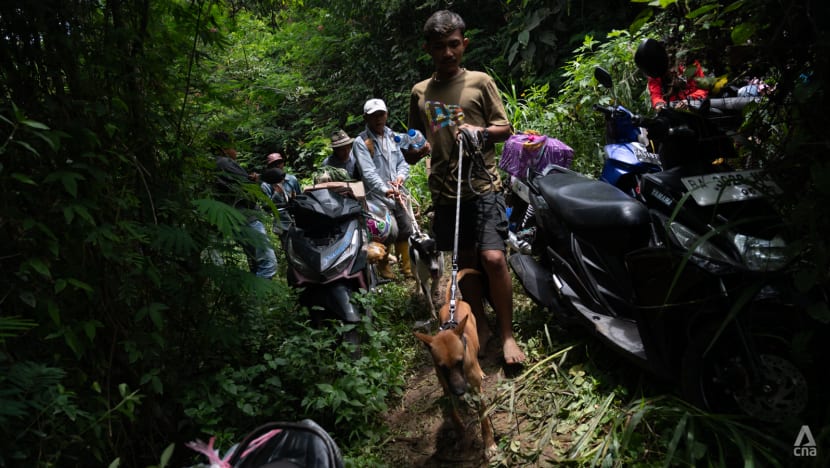
BRUTAL HUNTS, KILLER INSTINCTS
The only thing that remains unchanged for centuries is the brutal nature in which these hunts are conducted.
The hunters do not carry guns or any other weapons to ensure a quick kill, relying instead on the dogs’ killer instincts which their human handlers nurtured from a young age.
“I can’t describe how happy I am whenever my dog is covered in (boar) blood after catching it,” said Mr Sumantri - a short, skinny man with a thin, salt and pepper mustache - with a huge grin on his face.
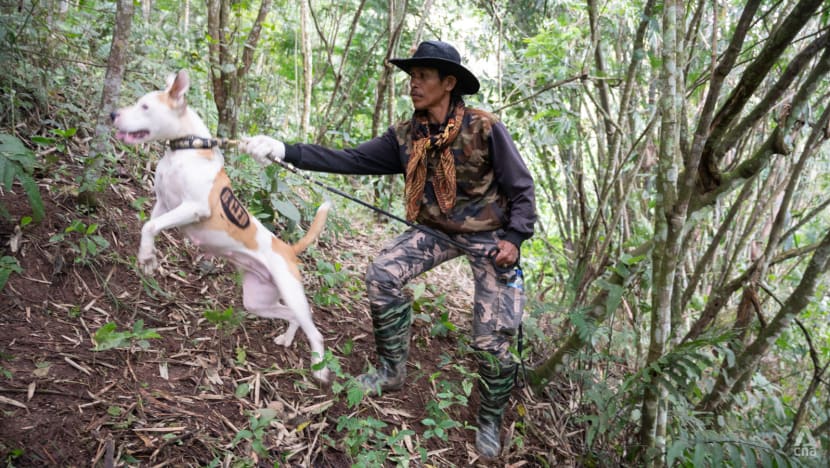
There are times when the wild boars evade capture without hurting themselves or anything else.
But it is also common for the animals to fight back, particularly when they are cornered. The ensuing standoff usually ends when the swines are able to free themselves from their pursuers or are slain and torn to pieces by the pack of canines surrounding them.
These sharp-tusked boars – which are typically larger and more agile than dogs – sometimes manage to take down a few of their foes before dying or escaping.
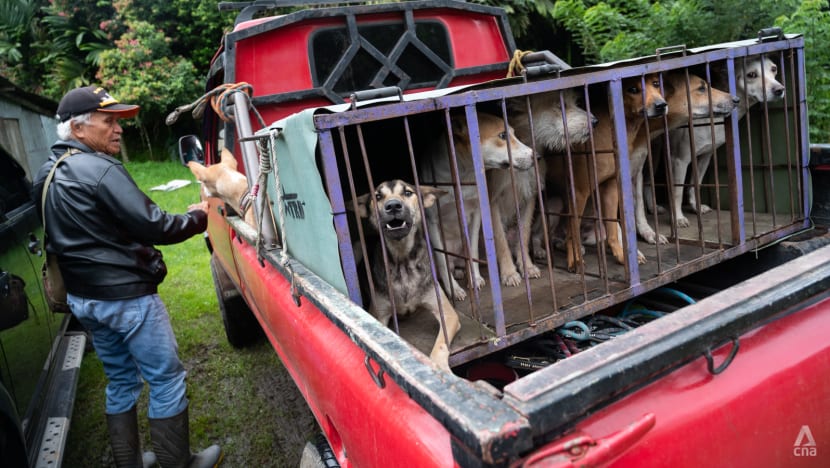
This was exactly what happened to one of Muhammad Azriza’s dogs a few months ago. In the middle of a chase, a boar fought back and managed to thrust its tusks deep into the dog’s torso and ruptured a number of its vital organs.
“The boar escaped and my brother dressed the (dog’s) wound with his shirt. He brought it to the doctor but the dog was dead before they arrived,” the 17-year-old farmer told CNA.
“I was so sad. But that’s life.”
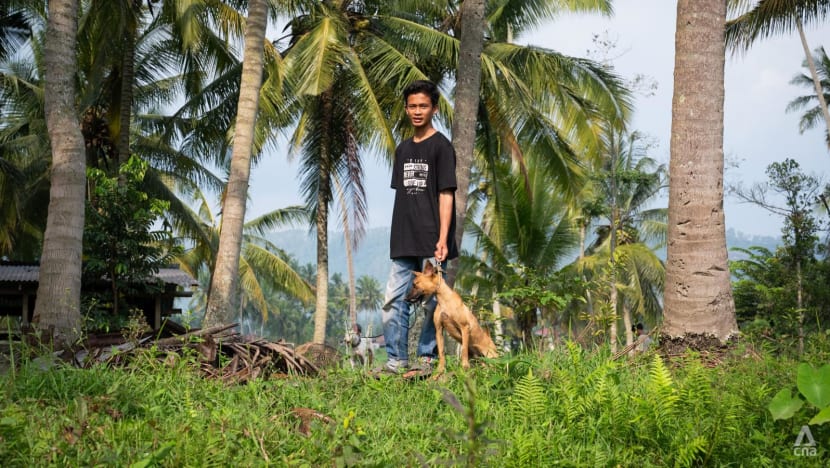
A DANGEROUS PRACTICE
Dogs and boars are not the only casualties to the practice.
Hunters often injure themselves from boar attacks and snake bites or by falling as they navigate their ways through slippery hill slopes and ravines.
The local population is also at risk.
In Sungai Limau village, located some 72km away from Sikaladi, a boar injured two people: A seven-year-old boy and his 64-year-old grandmother as it ventured through a village while being chased down by dozens of hunters during a similar hunting event in November.
That same month, a similar incident happened 22km away in Aur Malintang village. The victim was a 10-year-old girl who had to be treated for injuries to her arms and legs.
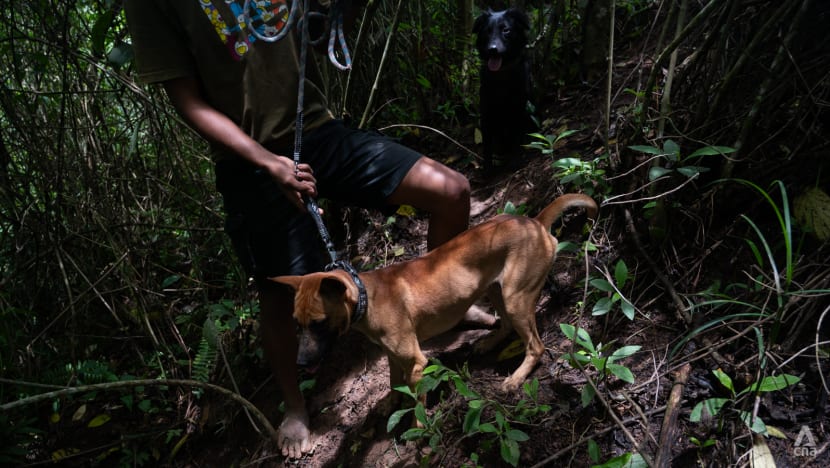
The West Sumatra Natural Resource Conservation Agency has been trying to discourage the practice of hunting down wild boars.
They are one of the primary sources of food for the critically endangered Sumatran tiger. The agency estimated that 120 of the 600 Sumatran tigers left in the world are in West Sumatra, a mountainous province where 56 per cent of its area is thick forests.
“We urge (hunters) to simply chase away these wild boars and drive them back to the jungle,” agency chief Mr Ardi Andono told CNA.
He added that a dwindling wild boar population would mean more cases of tigers venturing into human settlements and farmlands, increasing the risk of conflict between men and the protected species.
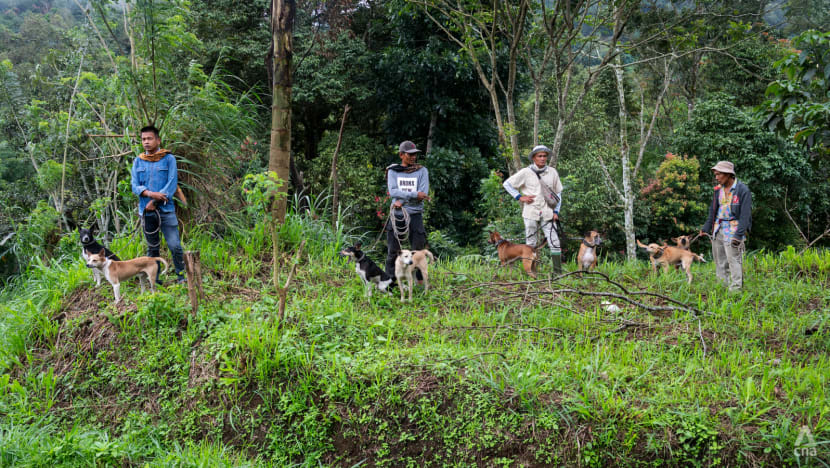
It is hard to estimate how much the wild boar population has fluctuated over the years. The swines are not a protected species and thus there has hardly been any studies about them.
To protect the tigers’ source of food, the government has established no hunting zones inside its known habitats.
But the West Sumatra government stopped short from issuing an outright ban on wild boar hunting, arguing that the practice is vital to keep the swines’ population in check in a province where nearly 20 per cent of its 5.5 million inhabitants are farmers.
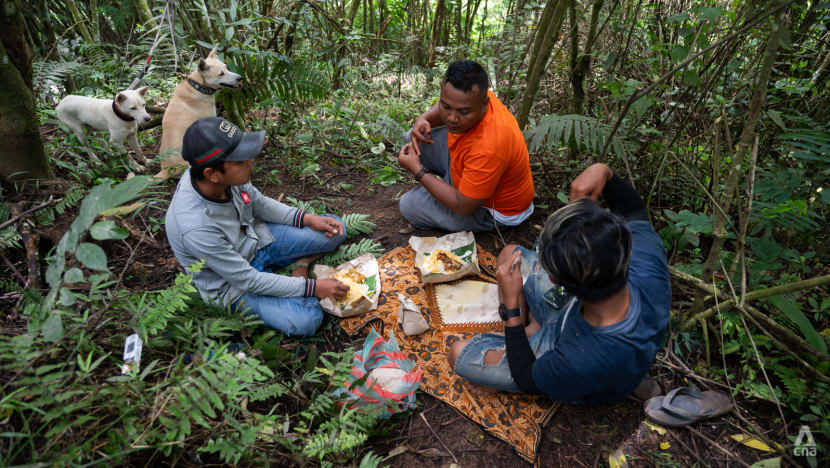
Wild boar hunting, government officials and local politicians argued, has become somewhat of a tradition in West Sumatra.
Today, there are over 4,000 West Sumatran hunters registered with the boar hunting association PORBI - more than any other province in Indonesia.
Drawn by the sport’s popularity, several regencies in West Sumatra have been taking turns to stage large-scale hunting events. Some of these gatherings are capable of drawing at least a thousand participants - some of whom flew all the way from Jakarta and West Java - located thousands of kilometres away.
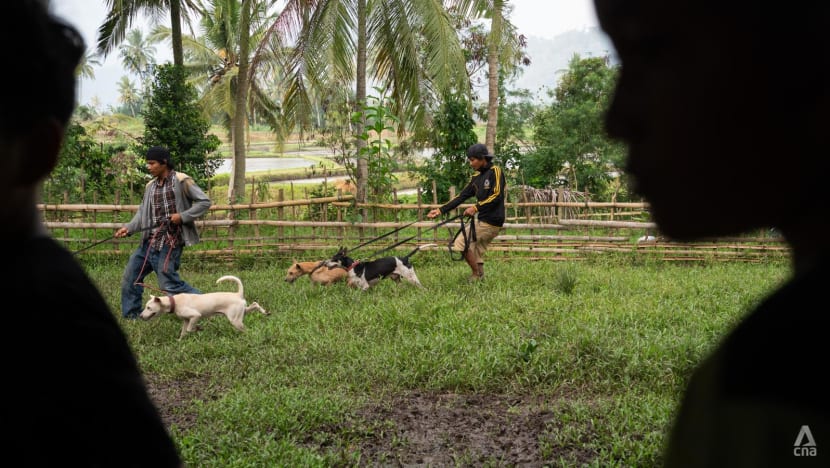
ADRENALINE RUSH
Most hunters in West Sumatra start at an early age.
Azriza - the young farmer - began hunting for wild boars when he was 12 and at first saw the activity as nothing more than a way to bond with his father and older brother. They are the two people responsible for introducing him to the sport.
But then, after so many failed pursuits and disappointments, his dog finally killed a boar a few years back.
“I was so happy I hugged my dog,” he said.
There was a sense of pride for Azriza, knowing that out of so many other canines involved in the hunt, his own was responsible for the day’s catch. He was hooked.
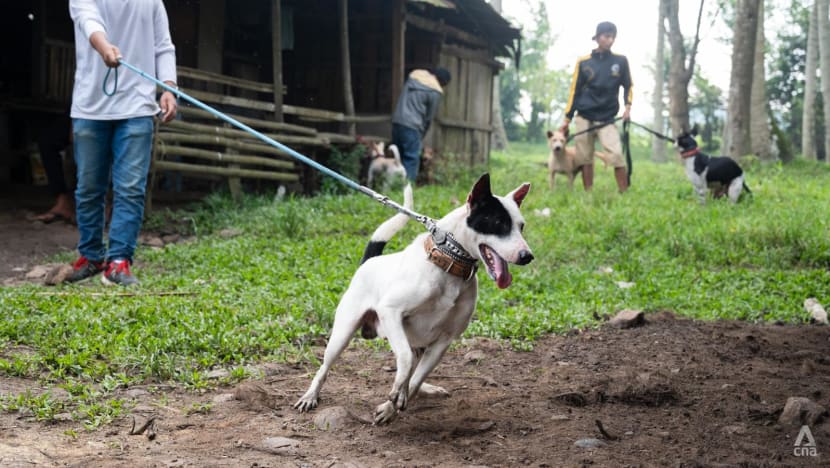
The thrill of a successful catch is so addictive, hunters told CNA, that they sometimes go to great lengths to relive the experience.
Mr Fahrur Rozi said he has travelled to the far corners of West Sumatra and neighbouring Riau province to hunt for boars. He has also poured thousands of dollars into this hobby, a huge sum of money for a food vendor like himself.
An untrained hunting dog starts from 1.5 million rupiah (US$94), the 36-year-old owner of four dogs told CNA. The price can double when a dog has undergone various training regimes and is deemed ready to hunt. And its worth goes up exponentially with each confirmed kill.
“I’ve seen dogs which are worth more than a car,” Mr Fahrur said.
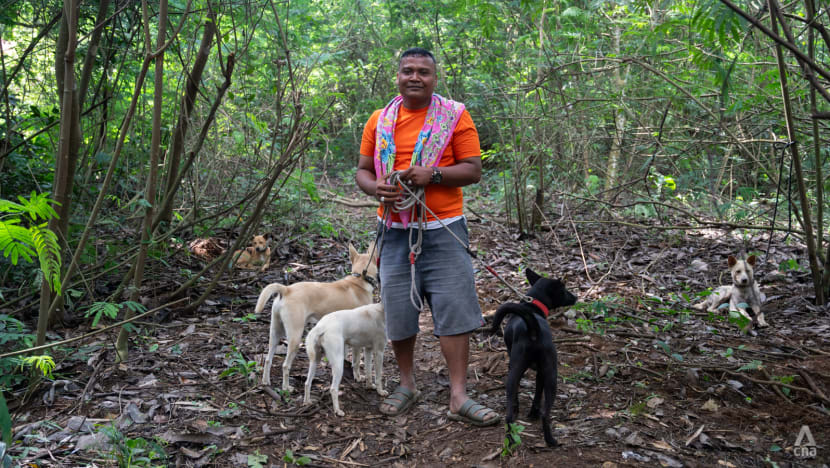
There are even schools where dogs are trained to track down the scent of a boar and go through obstacle courses. They are also trained to go for the kill each time they see a swine.
Once the dogs are trained, they still need to be regularly kept fit. Each hunter has a special way to boost their four-legged friends’ stamina, from making them swim upstream to feeding them vitamins and supplements.
“The thrill of a catch makes it all worth it,” Mr Fahrur said.
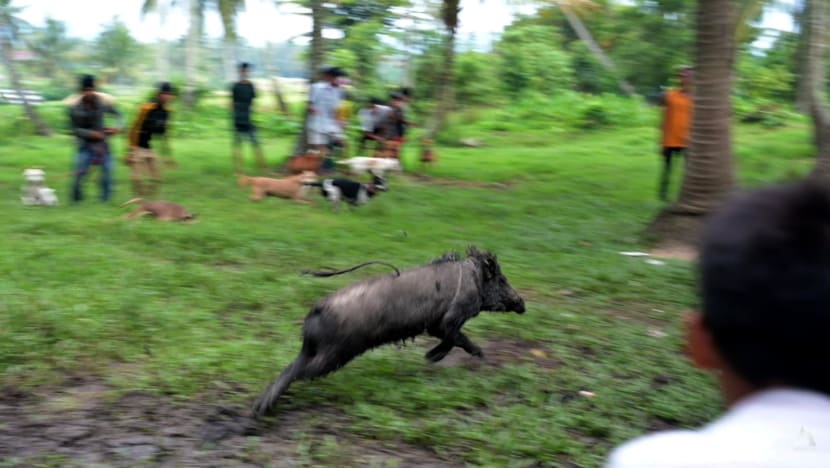
But a successful hunt is becoming more and more elusive, a telltale sign that the wild boar population is dwindling.
The hunt in Sikaladi for example, ended with no boar sighted, let alone caught, even with more than a hundred hunters and some two hundred dogs searching every corner of the densely vegetated hill for hours.
“Before, we always caught at least one boar every time there was a hunt like this. Now, there are times when you go home empty-handed,” Mr Zulfikar Idris, a 43-year-old man who sells clothes at a local market whenever he is not hunting, told CNA.
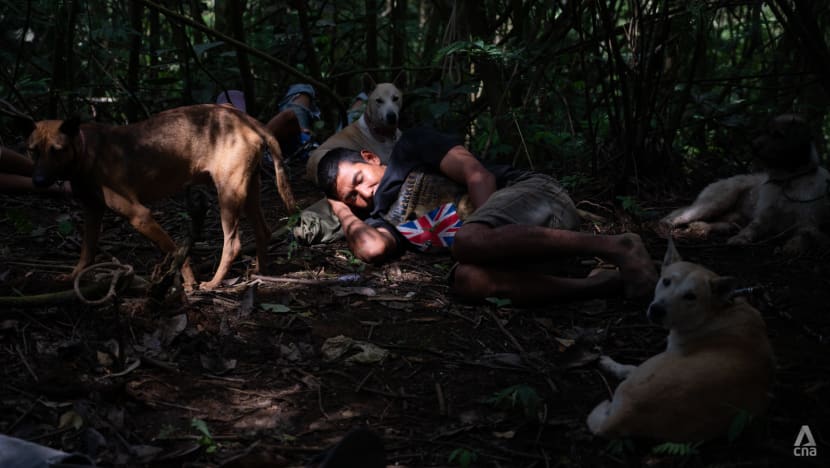
Wild boars are becoming increasingly elusive in some parts of West Sumatra that sometimes organisers release previously caught swines or those bred on a farm ahead of the hunt, particularly during large-scale hunting events.
Despite this, Mr Zulfikar is not deterred and said he will continue to hunt for boars as often as he can.
“It has been something that is passed down from one generation to the next in my family,” he said. “It’s more than just a hobby. It’s tradition.”
